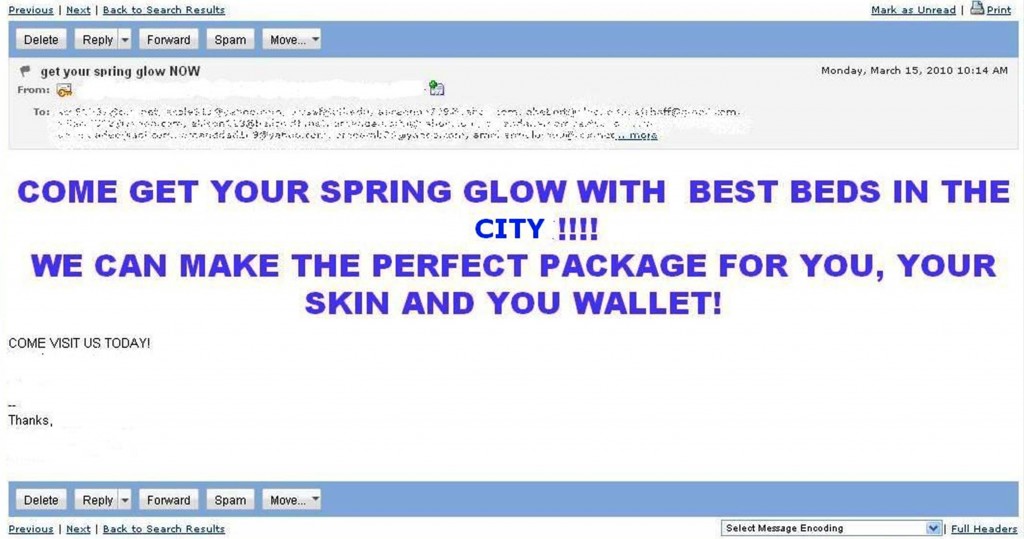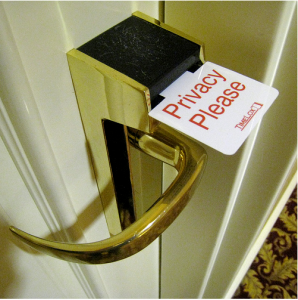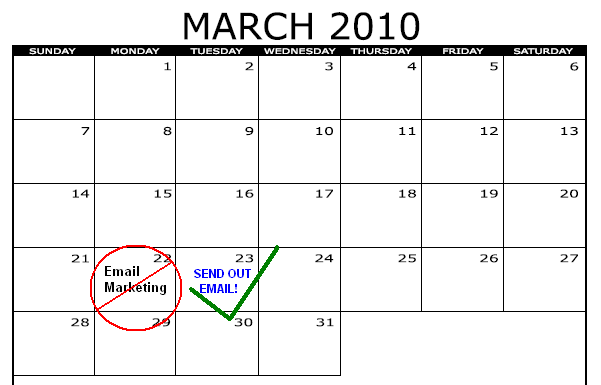Email Marketing for Small Business: 9 Things Not to Do
March 17th, 2010 by
I am all about receiving e-mail marketing from eCommerce sites that I am interested in. Seriously – my personal e-mail inbox has 2,445 unread messages – I sign up for everything 🙂 With that said, you have to say something enticing for me to open your e-mail. And, for some reason, today I opened an e-mail from a local small business that seriously frustrated me. The guilty party will remain nameless.
In my current position at Search Influence, I do not work with email marketing on a daily basis. However, in my previous job, I did. I worked with both consumer emails and eNewsletters within organizations. My intention here is not to call-out the small business who sent this email – but, to hopefully allow other small businesses to learn from their mistakes with some very basic email marketing tips.
For starters, I will show you a screen shot of the email that I received. At first glance, how many things can you find wrong with it?
This is just to give you a visual. There are some things that you cannot tell just by looking at this screen shot.
At first glance, here are some things that I noticed that you should NOT do when sending an email to your customers:
1. The very first thing you might notice is that the entire email is written in ALL CAPS and has a million exclamation points!!!!!!!! This actually lessens the impact of your message and may appear that you are SHOUTING AT YOUR CUSTOMER!!! It can also land your email in your customer’s spam folder.
2. There are some obvious grammatical errors here. One in particular is the misspelling of what is supposed to read “your” in the last line. It is evident that whoever wrote and sent this email was in a rush and did not proofread their own work and also did not get someone else to proofread the work. (And, if they did, then….well…I will leave it at that 🙂 ) You should ALWAYS proofread your work, and even get someone else to give it a once-over before you hit the “send” button. In addition to proofreading, you should also send out test emails to yourself or fellow staffers, to make sure that it is functioning properly and that it looks just how you want it to look.
3. The subject line used in this email reads “get your spring glow NOW.” This is a weak subject line because it does not give a peek of what you can find inside the email; it pretty much IS all of what is inside this email. The actual content of this email itself is not much more than what is listed in the subject line. In the article “15 Email-Marketing Best Practices”, Mitchell Harper says “When your email arrives in your subscriber’s inbox, you generally have about half a second to catch their attention with the subject line of your email. After this, they will either delete your email or ignore it.” He later suggests, “In your subject line, try and specify a benefit that the subscriber can expect by reading your email.”
4. Here is something that you may not be able to see in the screen shot: All of the recipients of the email are visible. It is an email marketing best practice to not disclose the email addresses of the recipients of your email. It allows your customers privacy.
5. Second thing that you cannot tell just by viewing this screen shot: there is not a single link within this email! How is the consumer supposed to dive in deeper and get more information? This is a major rookie mistake. This particular business has a website. Why would you not want to drive more traffic to your site? This is a missed opportunity indeed.
6. There is no unsubscribe option given in this email. According to Wikipedia, “The CAN-SPAM Act of 2003, signed into law by President George W. Bush on December 16, 2003, establishes the United States’ first national standards for the sending of commercial e-mail and requires the Federal Trade Commission (FTC) to enforce its provisions.” Wikipedia later explains that under the CAN-SPAM Act of 2003, “A visible and operable unsubscribe mechanism must be present in all emails.” This gives your customer the option of no longer receiving your business’ marketing emails. Furthermore, if your customer decides to unsubscribe from your emails, you have 10 days to honor their request.
7. They are not promoting or offering anything worth my time to take any action here: no percentage off, no BOGO (buy one get one), no sale information. You get the picture. What are they trying to get me to do here? And, an even better question: what are they willing to do to get me there? There was no planning involved in this email. Try to offer your readers something unique in each email that you send, whether it be a promotion or an important news story relevant to your business.
8. The are no images in the email to catch the reader’s attention. It is not a necessity to include imagery in your email content. However, it is a good idea. Pleasant and relevant imagery can catch the reader’s attention. Even something as simple as including your company’s logo can help to build your brand recognition.
9. Another not so obvious factor: this email was sent out on a Monday. According to the article by Mitchell Harper entitled “15 Email-Marketing Best Practices”: “Studies conducted by online research analysts have shown that the best days to perform a mail-out to your list are Tuesday and Wednesday, as this is when people are more receptive to communication. This means that they are more likely to read your content and click on links, meaning more sales. On Mondays, everyone is still recovering from a hectic weekend. On Thursday and Friday, people are already too busy looking forward to the weekend.”
Search Influence‘s in-house email marketing guru, Janna Vastola, adds that she believes “The best time to send is Tuesday between 9-10 am.”
These are only a few basic email marketing tips. Essentially, what you put in is what you will get out. First impressions are everything. If your customers open an email from your business, such as the one outlined in this blog, they may not open another one, if it makes its way into their inbox.
Take your time, plan and have a purpose for your email. No matter how many email addresses you have on your email marketing list, they are all valuable to your business. Your customers’ time is also valuable. Make it worth their time to open your email and actually get something out of it. Just because you operate a small business does not mean that you cannot create an email marketing campaign that rivals the biggest and best!
{ Prepare + Promote + Proofread + Professionalism = Positive Brand Image + Conversions + ROI (Return on Investment) }
Resources:
- 15 Email-Marketing Best Practices by Mitchell Harper via www.interspire.com
- Wikipedia
- Many thanks to fellow Search Influencer, Janna Vastola, for her comments.
Photo Credits:
- “Pug Shot” http://www.flickr.com/photos/jerry_reynolds/1449005045
- “Privacy, Please!” http://www.flickr.com/photos/nitot/3488350975
- “Unsubscribe” http://www.flickr.com/photos/johnhaydon/4349744825
- “Weakest Link” http://www.flickr.com/photos/96dpi/3371440496











I read that screen shot email twice because I thought it was me not making sense of it, not the other way around. Not only did they not grab me with that email, I would have blocked it after reading it and they would never be able to try and sell to me again. I hope they learn a valuable lesson, maybe they will read your post a learn a thing or two, I know I did.
Thanks for the comment, John! I am glad you got something out of it. This is a franchise business. Their corp office supposedly supplies franchisees with all of their marketing needs. I think they should maybe pay more attention to their online presence!
[…] Amanda Barth/Search Influence: E-mail Marketing for Small Business: 9 Things Not to Do […]
[…] Amanda Barth/Search Influence: E-mail Marketing for Small Business: 9 Things Not to Do […]